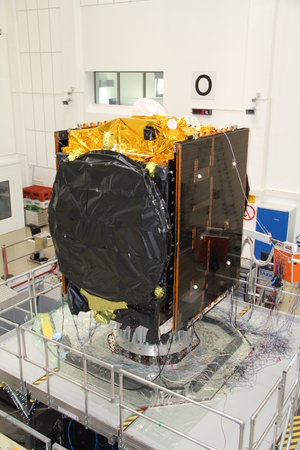
Shaker test of telecom radiator
Thank you for liking
You have already liked this page, you can only like it once!
This Deployable Panel Radiator (DPR), designed to remove waste heat from the coming generation of telecommunication satellite payloads, is seen during shaker testing at the ESTEC Test Centre in Noordwik, the Netherlands. The testing, reproducing the vibration of a rocket launch, took place on the electrodynamic Quad shaker in early July 2016.
The new DPR, has been developed with the extensive support of ESA by prime contractor Airbus Defense & Space, intended for incorporation into its new Eurostar Neo product line.
Traditionally the fixed passive radiators on the north and south panels of telecoms spacecraft were sufficient to radiate heat into space and keep spacecraft from overheating. But for such missions as the new generation of Very High Throughput Satellites, generating on the order of 25 kW of power, they are no longer adequate.
The Deployable Panel Radiator will provide additional radiating capability for such highly dissipative payloads. The DPR’s most innovative aspect is its passive circulation system, which allows for efficient cooling of the payload thanks to two-phase loop heat pipes. Heat is transported by gaseous ammonia from evaporators fixed on the payload heat pipes to condensers embedded inside the 4 m x 1 m radiator panel. After condensation, ammonia returns in liquid form to the evaporators thanks to capillary mesh acting as a passive pump.
-
CREDIT
ESA -
LICENCE
ESA Standard Licence
-
Interior Shot
-
-

Shaker test of radiator panel

EDRS-C on the shaker

EDRS-C on the shaker

EDRS-C on the shaker


